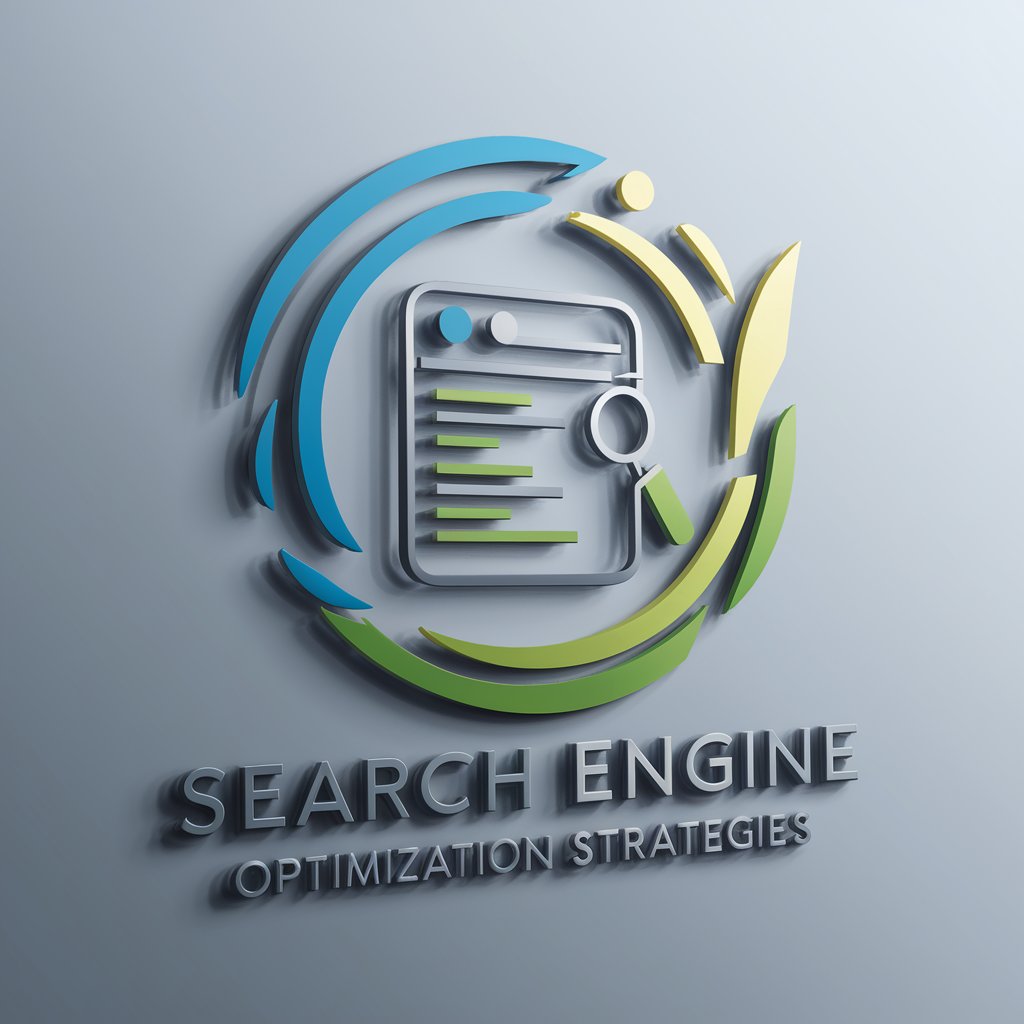Understanding Search Engine Optimization (SEO)
At its core, Search Engine Optimization (SEO) is the art and science of enhancing your online content to rank higher on search engines. It involves understanding how search engines work and what users are searching for.
Search engines like Google utilize complex algorithms to determine which pages appear in search results. They consider numerous factors, including relevance, authority, and user experience.
Effective SEO means aligning your website with these criteria. This alignment can lead to more organic traffic and potential customers discovering your business.
Moreover, SEO isn’t a one-time task; it’s an ongoing process that requires constant adaptation as trends evolve. Keeping up with updates from major search engines ensures that your strategies remain effective over time.
By grasping the fundamentals of SEO, you lay a solid foundation for driving growth in today’s competitive digital arena.
The Importance of SEO in Digital Marketing
SEO is a cornerstone of digital marketing. It drives organic traffic to websites, making it essential for online visibility.
Without effective SEO strategies, even the best content can go unnoticed. People use search engines to find solutions every day. If your site doesn’t appear in search results, you miss out on potential customers.
Moreover, SEO helps build trust and credibility. A high-ranking website signals authority to users. They are more likely to engage with brands that show up on the first page of search engine results.
Investing in SEO also yields long-term benefits. Unlike paid advertising, which stops generating traffic once you stop funding it, organic rankings can continue bringing visitors over time.
Understanding its importance enables businesses to allocate resources effectively and stay competitive in their industries.
Types of SEO Strategies
Search engine optimization strategies can be broadly categorized into three main types: on-page SEO, off-page SEO, and technical SEO. Each type plays a crucial role in improving a website’s visibility.
On-page SEO focuses on optimizing individual web pages. This includes enhancing content quality, keyword placement, and ensuring the user experience is top-notch.
Off-page SEO involves activities outside your website that contribute to its authority and ranking. This often means building backlinks from reputable sources or engaging with audiences through social media platforms.
Technical SEO ensures that search engines can crawl and index your site effectively. It deals with aspects like site speed, mobile responsiveness, and structured data.
These varied strategies work together to create a comprehensive approach to boosting online presence and attracting organic traffic.
On-Page SEO Techniques
On-page SEO is crucial for optimizing individual web pages to rank higher in search results. It involves several key techniques that enhance the user experience and improve visibility.
Keyword research should be your starting point. Identify relevant keywords and sprinkle them naturally throughout your content. This helps search engines understand what your page is about.
Next, focus on content optimization. Create high-quality, engaging text that answers users’ queries effectively. Use headings and bullet points for easier readability.
Pay attention to URL structure as well. A clear, concise URL makes it easier for both users and search engines to navigate your site.
Meta descriptions also play a vital role in attracting clicks from search engine results pages (SERPs). Craft compelling summaries that encourage users to click through.
Don’t overlook mobile responsiveness and site speed. Ensuring fast load times offers a seamless experience across devices while improving rankings significantly.
A. Keyword research and optimization
Keyword research and optimization form the backbone of effective SEO strategies. Understanding what words and phrases your target audience is searching for can dramatically enhance your content’s visibility.
Tools :Start by identifying relevant keywords that align with your business goals. Tools like Google Keyword Planner or SEMrush can provide valuable insights into search volume and competition levels.
Once you have a list, prioritize long-tail keywords. These are often less competitive and can attract more qualified leads. Incorporate these keywords naturally into your content, headings, and meta tags to improve relevance without sacrificing readability.
Regularly revisit your keyword strategy to adapt to changing trends in search behavior. The digital landscape evolves rapidly; staying informed ensures you maintain an edge over competitors while meeting user needs effectively.
B. Content optimization
Content optimization is crucial for effective SEO. It involves creating high-quality, relevant content that resonates with your target audience.
Start by identifying keywords that align with user intent. Use these strategically throughout your text, but avoid keyword stuffing. Natural incorporation helps maintain the flow and enhances readability.
Next, focus on formatting. Break up long paragraphs into engaging sections to improve user experience. Utilize headings and bullet points for easy navigation.
Images also play a vital role in content optimization. Optimize image sizes to enhance load times and include alt texts for better accessibility and context for search engines.
Don’t forget about internal linking! This technique not only boosts engagement but also assists search engines in crawling through your website effectively.
C. URL structure and meta descriptions
A well-structured URL is essential for both search engines and users. It should be concise, descriptive, and easy to read. Avoid lengthy strings of numbers or unnecessary characters. Instead, incorporate relevant keywords that reflect the page content.
Meta descriptions serve as a brief summary of your web pages in search results. They should ideally be between 150-160 characters long. Craft engaging descriptions that entice users to click through while accurately representing what they’ll find on the page.
Using targeted keywords in your meta description can improve visibility. However, it’s crucial not to overstuff them—this can lead to penalties rather than rewards from search engines.
Remember that these elements are often the first impression potential visitors have of your site. Make them count by being clear, relevant, and appealing!
D. Mobile responsiveness and site speed
Mobile responsiveness is no longer optional. With more users browsing the internet on mobile devices, having a site that adapts seamlessly to various screen sizes is crucial. A responsive design enhances user experience, ensuring your content looks great whether viewed on a phone or tablet.
Site speed plays an equally important role in retaining visitors. Slow-loading pages frustrate users and lead them to seek faster alternatives. Search engines like Google consider page speed as a ranking factor, making it essential for SEO strategies.
Optimizing images, leveraging browser caching, and minimizing JavaScript can significantly improve loading times. Tools like Google PageSpeed Insights offer recommendations tailored to your site’s needs.
By focusing on these elements—mobile responsiveness and site speed—you not only enhance usability but also boost your chances of ranking higher in search results. Engaging designs paired with swift performance create an inviting atmosphere for potential customers.
Off-Page SEO Techniques
Off-page SEO techniques play a crucial role in enhancing your website’s visibility. They focus on building authority and credibility beyond your own site.
Building backlinks is one of the most effective strategies. Quality links from reputable websites signal to search engines that your content is trustworthy. Networking with industry influencers can lead to these valuable connections.
Social media marketing also contributes significantly. Sharing engaging content across platforms boosts brand awareness and encourages user interaction. This not only drives traffic but enhances user engagement, which search engines notice.
Online reviews are another key aspect of off-page SEO. Positive feedback builds trust among potential customers while improving local rankings in search results.
Engaging in forums or discussion boards related to your niche can further establish expertise and drive referral traffic back to your site. Each technique complements the others, creating a robust off-page strategy that strengthens overall online presence.
A. Building backlinks
Building backlinks is a crucial component of any effective SEO strategy. These links serve as pathways from other websites to yours, signaling credibility and authority. When reputable sites link to your content, it enhances your search engine ranking.
Quality matters more than quantity in backlink building. Focus on acquiring links from high-authority domains relevant to your niche. This can be achieved through guest blogging or collaborations with influencers who share your audience.
Engaging in community forums or online discussions helps establish relationships that may lead to natural linking opportunities. Create valuable content that others want to reference; this increases the likelihood they’ll link back to you organically.
Tracking your backlink profile regularly allows you to assess its health and identify areas for improvement. Tools like Google Search Console can provide insights into which sites are linking back and how those links impact traffic and rankings.
B. Social media marketing
Social media marketing plays a crucial role in modern SEO strategies. It’s not just about posting updates; it’s about creating valuable connections with your audience.
By sharing quality content across platforms like Facebook, Twitter, and Instagram, you can drive traffic back to your website. Engaging posts help build brand awareness and trust among followers.
When users share your content, it amplifies reach and increases the chances of earning backlinks. This social validation signals to search engines that your site is credible.
Moreover, social media profiles often rank in search results. Optimizing these profiles with relevant keywords can enhance visibility further.
Regularly interacting with users also helps cultivate community engagement while providing insights into what resonates with your target audience. Embrace analytics tools to track performance and adjust strategies accordingly for continuous improvement.
Local SEO Tactics for Small Businesses
Local SEO is crucial for small businesses looking to attract nearby customers. One of the most effective tactics involves claiming and optimizing your Google My Business listing. This enhances your visibility in local search results.
Incorporate location-based keywords into your website content. These keywords can help you appear in searches relevant to your area, making it easier for potential clients to find you.
Encourage customer reviews on platforms like Yelp or Facebook. Positive feedback boosts credibility and signals to search engines that your business is trustworthy.
Additionally, ensure consistent NAP (Name, Address, Phone Number) information across all online directories. Consistency helps build authority with search engines while improving user experience.
Measuring
Measuring the effectiveness of your search engine optimization strategies is crucial. It helps you understand what’s working and what needs improvement.
Start with key performance indicators (KPIs). Metrics like organic traffic, bounce rates, and conversion rates provide insight into user engagement and website performance. Track these regularly to gauge the impact of your efforts.
Utilize tools such as Google Analytics or SEMrush for comprehensive data analysis. These platforms offer detailed reports that highlight areas where your SEO can be enhanced.
Don’t forget about keyword rankings. Monitor how well your target keywords perform over time. This will inform adjustments in content strategy and optimization tactics.
Regular audits can also reveal technical issues affecting site health. Addressing these promptly ensures a smoother user experience, ultimately influencing search rankings positively.
Stay updated on algorithm changes too; they often influence how you measure success in SEO initiatives.
CONCLUSION
Search engine optimization (SEO) is a vital component of any successful digital marketing strategy. With the right approaches, businesses can improve their visibility and attract more traffic to their websites.
Understanding SEO starts with recognizing its importance. It helps businesses connect with potential customers who are actively searching for products or services they offer. As you dive deeper into SEO strategies, remember that both on-page and off-page techniques play crucial roles in your overall success.
On-page aspects like keyword research, content quality, URL structure, mobile responsiveness, and site speed significantly affect how search engines view your website. Meanwhile, off-page strategies such as building backlinks and leveraging social media can amplify your reach beyond just those who visit your site directly.
For small businesses aiming to capture local audiences, implementing local SEO tactics is essential. These methods ensure that you stand out in local searches and engage effectively with your community.
Regularly measuring the effectiveness of these strategies will help refine your approach over time. Keep an eye on analytics to understand what works best for you.
Navigating the world of Search Engine Optimization Strategies takes effort but pays long-term dividends in increased online presence and engagement. By committing to effective practices outlined throughout this guide, you’ll be well-equipped to enhance your digital footprint in today’s competitive landscape.



